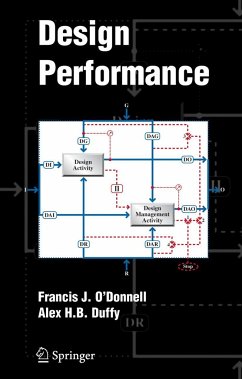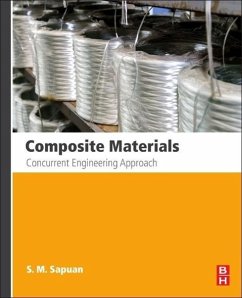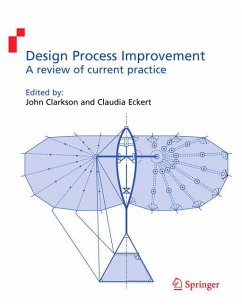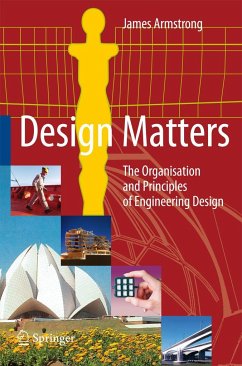
Engineering Design
A Systematic Approach
Herausgeber: Pahl, Gerhard; Feldhusen, Jörg; Beitz, Wolfgang
Versandkostenfrei!
Versandfertig in 6-10 Tagen
69,99 €
inkl. MwSt.
Weitere Ausgaben:

PAYBACK Punkte
35 °P sammeln!
This is the second, enlarged and updated edition of Pahl & Beitz which has established itself as a key text in Engineering Design. The translation is by Ken Wallace of the University of Cambridge with the assistance of Lucienne Blessing and Frank Bauert. In order to increase the chances of success for new engineering products, the design process must be carefully planned and systematically executed. For this to be possible, the design process must be broken down into phases and steps. This study lays down a strategy for this process and brings together the extensive body of knowledge about modern approaches to systematic design. No other book in English provides so detailed and thorough an approach to engineering and design methodology.
Engineering design must be carefully planned and systematically executed. In particular, engineering design methods must integrate the many different aspects of designing and the priorities of the end-user.
Engineering Design (3rd edition) describes a systematic approach to engineering design. The authors argue that such an approach, applied flexibly and adapted to a particular task, is essential for successful product development. The design process is first broken down into phases and then into distinct steps, each with its own working methods. The third edition of this internationally-recognised text is enhanced with new perspectives and the latest thinking. These include extended treatment of product planning; new sections on organisation structures, simultaneous engineering, leadership and team behaviour; and updated chapters on quality methods and estimating costs. New examples have been added and existing ones extended, with additions on design to minimise wear, design for recycling, mechanical connections, mechatronics, and adaptronics.
Engineering Design (3rd edition) is translated and edited from the sixth German edition by Ken Wallace, Professor of Engineering Design at the University of Cambridge, and Luciënne Blessing, Professor of Engineering Design and Methodology at the Technical University of Berlin.
Topics covered include:
fundamentals;
product planning and product development;
task clarification and conceptual design;
embodiment design rules, principles and guidelines;
mechanical connections, mechatronics and adaptronics;
size ranges and modular products;
quality methods; and
cost estimation methods.
The book provides a comprehensive guide to successful product development for practising designers, students, and design educators. Fundamentals are emphasised throughout and short-term trends avoided; so the approach described provides a sound basis for design courses that help students move quickly and effectively into design practice.
Engineering Design (3rd edition) describes a systematic approach to engineering design. The authors argue that such an approach, applied flexibly and adapted to a particular task, is essential for successful product development. The design process is first broken down into phases and then into distinct steps, each with its own working methods. The third edition of this internationally-recognised text is enhanced with new perspectives and the latest thinking. These include extended treatment of product planning; new sections on organisation structures, simultaneous engineering, leadership and team behaviour; and updated chapters on quality methods and estimating costs. New examples have been added and existing ones extended, with additions on design to minimise wear, design for recycling, mechanical connections, mechatronics, and adaptronics.
Engineering Design (3rd edition) is translated and edited from the sixth German edition by Ken Wallace, Professor of Engineering Design at the University of Cambridge, and Luciënne Blessing, Professor of Engineering Design and Methodology at the Technical University of Berlin.
Topics covered include:
fundamentals;
product planning and product development;
task clarification and conceptual design;
embodiment design rules, principles and guidelines;
mechanical connections, mechatronics and adaptronics;
size ranges and modular products;
quality methods; and
cost estimation methods.
The book provides a comprehensive guide to successful product development for practising designers, students, and design educators. Fundamentals are emphasised throughout and short-term trends avoided; so the approach described provides a sound basis for design courses that help students move quickly and effectively into design practice.














